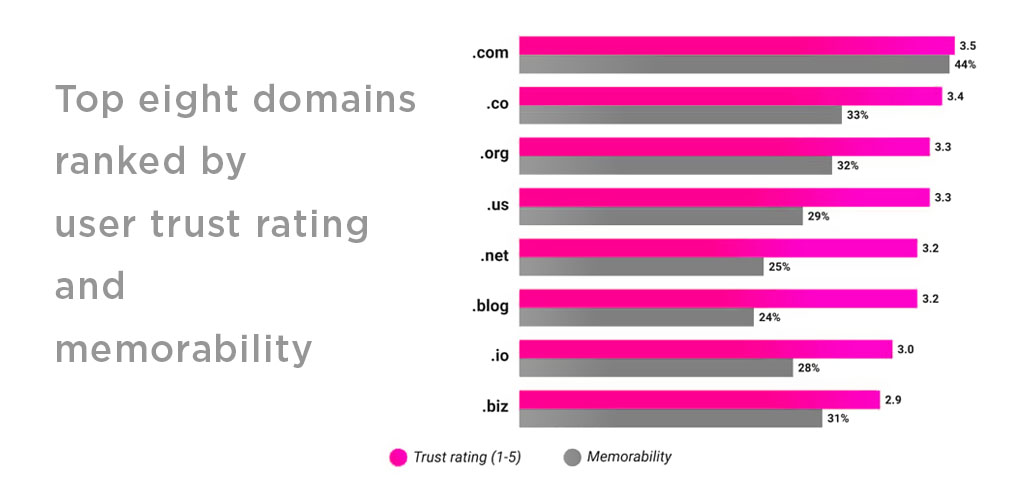Talking to a domain connoisseur, you will quickly conclude that the biggest and most popular domain extension is still .COM but times are changing and we need the answer to the question – What after .COM?
The fact is you may be a small business owner and you want to get a fresh .COM domain for a new product or service, so you sit down at your computer and brainstorm domain name after domain name.
A few hours later you may find yourself settling for a domain that may not be a perfect match for your marketing campaign. It is clear that .COM namespace is saturated to the point where you will either have to purchase an expensive aftermarket .COM domain.
I would note that a long domain name can lead to typing errors, which means a long .COM domain name is not a good choice so you may want to opt for an alternative, which is exactly what we want to explore.
What are the available alternatives to .COM?
Looking at the original gTLD composition, by popularity, second-best position is held by .NET and .ORG domain extensions, though again these are somewhat niche domains that are not the best choice for every type of website.

Because both .NET and .ORG. are renown domain extensions their namespace is not at a very high availability.
Still, if you are building a community around your website a .NET domain can be a viable choice, but before getting one first not other possible alternatives.
A simple error of mistyping one letter can lead from .COM to a very similar .CO domain name, and the fact that this ccTLD is recognized for its general-purpose use makes it a viable and very inexpensive alternative with a high namespace availability.
Indeed, I think it has the potential to get much bigger, but it depends on how well the registry will promote and handle .CO in terms of assurances, long-term management and pricing.
Industry veterans, would confirm that for local businesses and those who want to geo-target a specific region or language-speaking audience country-code domains are the best alternative.
Besides the benefit of a better search ranking in a local search, country code domains also provide recognizability within a certain audience, as these domains in some instances have a specific requirement for registration (for example, local presence) and such websites are highly trusted.
How about ngTLD?
Considering that a .COM ”replacement” should be a neutral domain extension that can be used for any kind of website the .SITE and .ONLINE look like they could make a hit but then after a while become a mainstay and level-out as demand subsides.
Some experts like such new generic top-level domains. From their point of view as the paradigm shifts they expect new ventures with vision will be demanding not only immense branding potential but a multiplicity of alternatives to identify with their markets.
A good example is a freelance writer with a website domain that ends .WRITE. From branding point-of-view his website address is now a powerful statement of what the freelancer can do, but it also looks amazing on resumes and business cards.
Niche general-purpose ccTLD domains?
A few specific industries may be giving us now a glimpse into the future with their domain choice being an example of things to come.
Niche industries that are related to artificial intelligence, deep learning and machine learning have already made their choice with. AI as it is an acronym and a perfect match for them.

Besides being a non-traditional domain extension, it provides amazing branding opportunities for companies, services or products.
Another example is .IO domain extension which is relatable to a tech term I/O (short for input/output) and as such it is an amazing choice for knowledge base, data exchange and online meeting websites.
So what after .COM?
Looking over the current aftermarket sales with popular domain marketplace websites, in terms of average premium domain price, we can see that average trading prices are down from year to year, while a select number of very valuable domains set new record transactions.
It is hard to believe we will bear witness to a single domain that turns into a popular replacement, as none of them will be on the same scale that we’ve had in the past with .COM.
Rather, it will be a combination of a small number of TLDs which will share a kind of distributed growth and can be used opportunistically by a specific kind of website.
Conclusion – what should be your choice after .COM?
When a perfect .COM domain is not an option, it may be a good idea to look at what alternative domain extensions are using businesses in the same industry, and go with that, though a general-use country code domain may be a fine option.
Ideally, you are better off with starting your online presence with the best solution you can find, rather than spending weeks trying to dig-up the perfect domain name.
